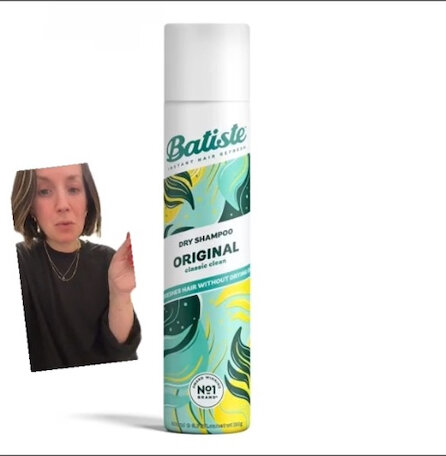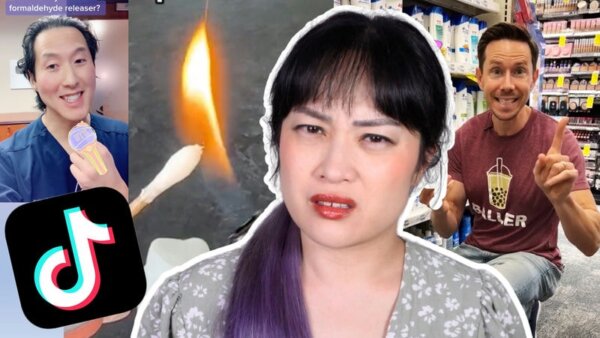Batiste is one of the most popular dry shampoos, but there are lots of posts on social media warning people not to use it. Is it actually bad for your hair? Here’s the lowdown.
What are the claims?
Here’s an example of one of these videos, which I debunked recently as part of a YouTube video on haircare myths:
Video: “Stop using these products. They are ruining your hair. Do I even need to go into detail?
Batiste is far too heavy to be using on your hair frequently. The reason why it’s an issue is because it’s really difficult to completely shampoo out of your hair unless you’re using a detox shampoo. If this isn’t washed out properly, it builds up on the scalp. It can block hair follicles, and that can lead to hair loss or lack of hair growth.”

Related Post: You don’t need to freak out about benzene in dry shampoo
Does Batiste build up on your hair and scalp?
Here are the ingredients in a standard Batiste Dry Shampoo:
- Butane
- Isobutane
- Propane
- Oryza Sativa (rice) Starch
- Alcohol Denat.
- Parfum (fragrance)
- Cocoyl Hydrolyzed Keratin
- Cetrimonium Chloride
- Distearyldimonium Chloride
The first three ingredients – butane, isobutane, and propane – are gases. They’re just going to evaporate and disappear. So will alcohol and fragrance.
Out of the ingredients that will be left on your scalp and hair:
Rice starch – This isn’t that hard to wash off your hair. I think we’ve all seen rice starch going down the drain when you wash rice.
Cocoyl hydrolysed keratin – This is little chunks of keratin protein attached to fatty acids (that’s the “cocoyl” bit). It’s generally not that difficult to wash off.
Cetrimonium chloride and distearyldimonium chloride – These two are cationic surfactants that are really common in conditioners. They’re the most basic type of conditioning ingredient, and aren’t really anything unusually long-lasting that you’d need special products to remove.
Related post: The Science of Hair Products: Shampoo and Conditioner
Dry shampoo and build-up
She does have a point with overuse of dry shampoo overall – many people who use dry shampoo end up washing their scalp less. Dry shampoo doesn’t remove residue from your scalp like properly washing your hair with a rinse-out shampoo. This can lead to scalp build-up, which interferes with hair follicles and can cause hair loss and reduce hair growth.
Not shampooing enough can also mess up the microbial balance on your scalp, which is one of the main causes of dandruff. Malassezia yeast can overgrow and cause scalp irritation. They break up triglycerides from your sebum (natural scalp oil) into free fatty acids, which can irritate your scalp and lead to inflammation, which also contributes to reduced hair growth.
Related post: Sulfate-Free Shampoo? The Science
But this is the case with anything that you put on your scalp. It’s not the Batiste itself that’s an issue – but many people who don’t wash their hair enough and experience these problems might be using Batiste a lot, since it’s such a popular dry shampoo.
This post is based off part of a longer video about haircare misinformation on social media, which also covers sulfates, silicones, testing heat protectants with fire, benzene, washing your hair twice, and much more.






